- Submissions

Full Text
Advances in Complementary & Alternative medicine
Molecular Targets of Ashwagandha (Withania Somnifera), Korean Ginseng (Panax Ginseng), Brahmi (Bacopa Monneri) and Gotu Kola (Centella Asiatica) in the Treatment of Autism Spectrum Disorder (ASD): A Global Health Perspective
Chelsea L Vu1 and Priya Weerasinghe2*
1McGovern Medical School, The University of Texas Health Science Center at Houston (UTHealth), USA
2Department of Pathology and Laboratory Medicine, The University of Texas Health Science Center at Houston (UTHealth), USA
*Corresponding author:Priya Weerasinghe, Department of Pathology and Laboratory Medicine, McGovern Medical School, The University of Texas Health Science Center at Houston (UTHealth), Houston, TX 77030, USA
Submission: October 08, 2024;Published: October 24, 2024

ISSN: 2637-7802 Volume 8 Issue 3
Abstract
Autism Spectrum Disorder (ASD) is a multifaceted neurodevelopmental disorder characterized by persistent, abnormal social impairment and restrictive, repetitive behavior. Though highly variable, a number of dysregulated physiological processes have been implicated in the pathogenesis of autism. Among these, the most commonly reported findings include heightened inflammation, inappropriate immune responses, oxidative stress, neuronal impairment and gastrointestinal disturbances. In western medicine, the medications prescribed to patients typically target the comorbidities experienced by individuals with autism, rather than these physiological disruptions. Stimulants, anxiolytics, antidepressants, antipsychotics, benzodiazepines and anticonvulsants are frequently prescribed to patients with ASD to address comorbidities, such as ADHD, anxiety, mood disorders and epilepsy. Due to the diversity in autism pathogenesis and its presentation, as well as the prevalence of comorbidities experienced by this population, multiple drugs are often simultaneously taken by patients with ASD and with variable efficacy. The resulting toxicities and side effects arising from these medications and their drug interactions have the potential to further complicate ASD symptomatology. In light of these concerns, the search for more efficacious and less toxic treatments remains crucial. In recent years, traditional herbal remedies have gained traction in western countries, and scientific support for their use in the treatment of various diseases and disorders, such as cancer, anxiety, depression, and ADHD, continues to be discovered. For individuals with ASD, herbal remedies have the potential to meet the need for individualized and minimally toxic treatments that address the spectrum of comorbidities and physiologic abnormalities presented within autism pathogenesis. This review of the literature is primarily intended to highlight molecular targets in the treatment of ASD and to kindle a discussion on promising herbal agents, such as Ashwagandha (Withania somnifera), Korean Ginseng (Panax Ginseng), Brahmi (Bacopa monneri) and Gotu Kola (Centella asiatica) in the use of ASD management within traditional and modern systems of medicine across the world. From a global health perspective, this review of the published material on ASD serves to deepen the understanding of herbal remedy use in the modern era and to explore ways of incorporating certain practices of traditional medicine into western medicine.
Keywords:Autism spectrum disorder; Herbal remedies; Withania somnifera; Ashwagandha; Panax Ginseng; Korean ginseng; Bacopa monneri; Brahmi; Centella asiatica; Gotu kola; Global health
Abbreviations:A2: Alpha-2; Abat: GABA Catabolic Enzyme; Ach: Acetylcholine; AChE: Acetylcholinesterase; AD: Alzheimer’s Disease; ADHD: Attention-Deficit Hyperactivity Disorder; AKT: Protein kinase B; AMP: Adenosine Monophosphate; APA: American Psychiatric Association; ASD: Autism Spectrum Disorder; ATPase: Adenosine Triphosphatase; Aβ: β-amyloid; Bax: Bcl-2 Associated X Protein; BC: Before Christ; Bcl: B- cell lymphoma; BcL-x: B- cell lymphoma extra-large gene; c-myc: Cellular Myelocytomatosis Oncogene; Ca2+: Calcium; CA3: Cornu Ammonis Region 3; CAT: Catalase; CCL2: C-C Motif Chemokine Ligand 2; CCL5: C-C Motif Chemokine Ligand 5; CD14: Cluster of Differentiation 14; CD4: Cluster of Differentiation 4; CD80: Cluster of Differentiation 80; CD83: Cluster of Differentiation 83; CD86: Cluster of Differentiation 86; CNS: Central Nervous System; COX-2: Cyclooxygenase-2; CREB: Cyclic AMP Response Element Binding Protein; CRH: Corticotropin- Releasing Hormone; CYP: Cytochrome P450; DNA: Deoxyribonucleic Acid; DSM-5: Diagnostic and Statistical Manual, Fifth Edition; eNOS: Endothelial Nitric Oxide Synthase; EU: European Union; FADD: Fas-Associated Death Domain; FDA: Food and Drug Administration; FNE: First Night Effect; GABA: Gamma- Aminobutyric Acid; GABA-T: GABA Transaminase; GAD: Glutamic Acid Decarboxylase; GAT1: Neuronal GABA Transporter; GDNF: Glial Cell Line-Derived Neurotrophic Factor; GI: Gastrointestinal; GPx: Glutathione Peroxidase; GSH: Reduced Glutathione H2o2: Hydrogen Peroxide; HPA: Hypothalamus-Pituitary- Adrenal; HUVECs: Human Umbilical Vein Endothelial Cells; IFN-y: Interferon Gamma; IL-17: Interleukin-17; IL-1B: Interleukin-1 beta; IL-6: Interleukin-6; IL-8: Interleukin-8; iNOS: Inducible Nitric Oxide Synthase; JAK/STAT: Janus Kinase/ Signal Transducer and Activator of Transcription; K+: Potassium; kg: Kilogram; KSS: Kwansei-Gakuin Sleepiness Scale; LD: Lethal Dose; LPS: Lipopolysaccharide; MAPK: Mitogen-Activated Protein Kinase; MCI: Mild Cognitive Impairment; MCL-1: Myeloid Cell Leukemia-1; MCP-1: Monocyte Chemoattractant Protein-1; MDA: Malondialdehyde; mg: Milligram; Mg2+: Magnesium; MHC: Major Histocompatibility Complex; MMSE: Mini-Mental State Examination; mTOR: Mammalian Target of Rapamycin; Na+: Sodium; NF-kB: Nuclear Factor-Kappa Beta; NMDA: N-Methyl-D-Aspartic Acid; NO: Nitric Oxide; NT: Neurotensin; P38: P38 Mitogen-Activated Protein Kinase; P53: Tumor Protein p53; PGE2: Prostaglandin E2; PHA: Phytohemagglutinin; PTZ: Pentylenetetrazol; PWM: Pokeweed Mitogen; Rb1: Ginsenoside Rb1; Rb2: Ginsenoside Rb2; Rb3: Ginsenoside Rb3; Re: Ginsenoside Re; Redox Reduction-oxidation; REM: Rapid Eye Movement; RET: Rearranged During Transfection; Rg1: Ginsenoside Rg1; RGE: Red Ginseng Extract; Rh1: Ginsenoside Rh1; RIP: Receptor-Interacting Protein; ROS: Reactive Oxygen Species; SOD: Superoxide dismutase; SSRI: Selective Serotonin Reuptake Inhibitor; STAI: State-Trait Anxiety Inventory; STAT3: Signal Transducer and Activator of Transcription 3; STZ: Streptozotocin; TGF-B: Transforming Growth Factor Beta; Th1: T-helper Cell Type 1; Th17: T-Helper Cell Type 17; Th2: T-Helper Cell Type 2; TLR: Toll-Like Receptor; TNF-a: Tumor Necrosis Factor- Alpha; TRAF2: TNF-R–Associated Factor 2; US: United States; USP: United States Pharmacopeia; UV: Ultraviolet; VEGF: Vascular Endothelial Growth Factor; WHO: World Health Organization; XO: Xanthine Oxidase
Introduction
Autism Spectrum Disorder (ASD) is a multifactorial, complex disorder characterized by persistent, abnormal social impairment and restrictive, repetitive behavior. In the United States, the prevalence of autism is estimated to be 1 in 44 children, while the global prevalence has been estimated to be about 1 in 100 children [1,2]. The variable presentation and intricate pathophysiology of autism complicates both diagnosis and treatment of the disorder, emphasizing the need for further research into both these areas. In the first documented description of autism, Leo Kanner described 11 children whose symptoms resembled, yet were distinct from previously defined psychiatric and developmental disorders in a paper titled Autisic Disturbances of Affective Contact. Kanner noted patterns of repetition, inclination towards aloneness, desire for sameness, sensory intolerance, and difficulties in forming affective interaction in these children [3]. Today, the definition of autism remains elusive and has even been broadened to account for the spectrum of manners in which autism presents. According to The American Psychiatric Association’s Diagnostic and Statistical Manual, Fifth Edition (DSM-5), a diagnosis of autism is defined by persistent deficits in social-emotional reciprocity, in nonverbal communication, and in forming, understanding and maintaining relationships.These deficits must also be accompanied by restrictive, repetitive patterns of behaviors, interests or activities [4].
Mirroring its presentation, the etiology and pathophysiology of ASD are likewise variable and poorly defined, making treatment equally complex. Many attribute this variability to the dynamic interaction between genetic, developmental and environmental factors. Reports of immune, neurologic, endocrine and gastrointestinal disturbances are common among autism patients. In addition, comorbidities are frequently experienced by this population. One population-based study found that of 83% of 8-year-olds with ASD had at least 1 comorbid developmental disorder, 16% had at least 1 comorbid neurologic disorder and 10% had at least 1 comorbid psychiatric disorder [5]. Among these comorbidities, ADHD, intellectual disability, anxiety, depression, epilepsy, gastrointestinal disorders, autoimmune disorders and sleep disturbances are especially common [6].
In western medicine, pharmacological treatments for ASD are used to ameliorate the symptoms of comorbid conditions, such as ADHD, mood disorders, anxiety and epilepsy. The medications most frequently prescribed include stimulants, antidepressants, antipsychotics, benzodiazepines, anxiolytics and anticonvulsants [7]. Although these treatments are targeted, individual treatments fail to address the extensive symptomatology of ASD. As a consequence, patients with autism frequently take numerous drugs simultaneously, with each medication carrying its own toxicities as well as toxicities arising from drug-drug interactions. The toxicities and side effects that may arise from these allopathic medications and their interactions have the potential to further complicate the acute and long-term pathogenesis of autism. For this reason, the search for less harmful pharmacological treatments remains crucial.
Current non-pharmacological treatments used in western medicine focus on ameliorating the associated behavioral, physical, and cognitive symptoms that are linked with autism. For example, cognitive-behavioral therapy, nutritional therapies, social skills training and educational interventions are common treatments for the management of autism symptoms. These treatments are widely used in conjunction with pharmacological treatments, with the goal of reducing disability and increasing functionality for individuals with autism.
In looking towards future treatments for autism, it may ironically be useful to look into the past. For thousands of years, herbal treatments have been employed as broad-acting remedies to treat various illnesses in non-western countries. In traditional Ayurvedic and Chinese medicinal practices, the use of these herbal treatments is part of a larger, holistic approach to patient care.
In western medicine, many so-called “holy-grail” drugs, such as aspirin, paclitaxel, digoxin and pilocarpine, are plant-derived [8]. Additionally, the use of herbal remedies outside of these marketed drugs has also increased among patients, emphasizing the need for a more comprehensive understanding of the mechanisms and potential uses of these agents [9]. This review seeks to understand how these herbal agents can be used in the management of ASD within the framework of western medicine, as well as globally, by detailing autism pathogenesis and the molecular targets of herbal agents such as Ashwagandha (Withania Somnifera), Ginseng (Panax ginseng), Brahmi (Bacopa Monnieri) and Gotu kola (Centella Asiatica). Given the variability of autism pathophysiology, it is possible to consider the use of these traditional herbal remedies, which have wide-spread, holistic effects throughout the body, in conjunction with established, non-pharmacological therapies. In addition, these remedies carry much less toxicity and can be combined with one another to tailor treatment to an individual patient’s needs. This individualization of treatment may pose revolutionary in the treatment of patients with autism, whose symptoms, needs and physiological responses can differ widely from one another.
Pathophysiology of ASD
Although the exact pathophysiology of ASD continues to be investigated, many studies highlight the involvement of inappropriate immune responses, gastrointestinal disturbances, neuronal impairment and endocrine abnormalities in individuals with autism [10]. The synergistic effects of these disruptions, as well as others still in need of further study, are likely to account for autism symptomatology and are therefore key targets for treatment.
Immune impairment
Immune dysregulation is a commonly reported finding in the pathogenesis of ASD. Abnormalities in T-cells, B-cells, natural killer cells and monocytes have been noted and are suspected to be one mechanism by which autism pathogenesis develops [11]. Immune impairments in ASD have been characterized by both abnormal innate and adaptive immune responses. The body’s innate or first line of defense is altered in patients with autism, who display elevated monocyte levels and decreased natural killer cell activity [12]. Inability to coordinate a normal response to pathogens also presents at the adaptive level of immunity. Early studies demonstrated that subjects with ASD displayed decreased lymphocyte responsiveness when stimulated with Pokeweed Mitogen (PWM) and Phytohemagglutinin (PHA), which are T- cell mitogens [13]. Since then, studies have found decreased total CD4+ T cell counts, disrupted immunoglobin levels and the presence of autoantibodies in the CNS of individuals with autism, providing further evidence of an abnormal adaptive immune response [12]. Imbalances in CD4+ T cell subsets, Th1 and Th2, have also been reported in ASD, with skews towards Th1 pro-inflammatory cytokines being associated with more severe behavioral impairment [14]. The aberrant cytokine production resulting from these disruptions in CD4+ T cell subsets further contribute to the amplified inflammatory state present in ASD pathogenesis. Collectively, these deviations in immune response place individuals with autism at a greater risk for other physiologic disruptions that mediate the pathogenic profile of the disorder.
Inflammation
Proinflammatory mediators have the potential to serve as pathologic markers and targets for treatments that stabilize the body’s dysregulated immune response in ASD. Studies have found elevated levels of several proinflammatory mediators, such as IL-6, IL-8, TNF-a and IFN- y in the brain tissues of individuals with ASD [15]. To understand how regulation of these markers may attenuate the symptomatology of autism, it is important to understand the signaling pathways propagated by these proinflammatory molecules.
In addition to the imbalances in cytokine-producing Th1 and Th2 cells, another mechanism by which dysregulation of these proinflammatory molecules is proposed to occur is through inappropriate activation of mast cells, which synthesize and secrete cytokines, histamine, proteases, prostaglandins, leukotrienes and other inflammatory molecules [16]. A study from Tsilioni et al. [17] reported elevated levels of mammal-specific peptides, Neurotensin (NT) and Corticotropin-Releasing Hormone (CRH), in the serum of children with autism [17]. These peptides are released in response to stress and can activate mast cells, resulting in an exaggerated inflammatory response characterized by aberrant cytokine production.
IL-6 is a key cytokine elevated in autism that has a host of effects, including modulating B-cell differentiation, assisting neutrophil trafficking, promoting inflammation and preventing apoptosis [18]. Through Signal Transducer and Activator of Transcription 3 (STAT3) signaling, IL- 6 upregulates COX-2, VEGF, INF-y and a variety of cytokines and chemokines, all of which create an environment favorable for inflammation [19]. In addition, STAT3 inhibits apoptosis by altering apoptotic regulator genes such as BcL-x, MCL- 1, and c-myc, as well as by binding to tumor suppressor gene p53 [19]. Through targeting IL-6 and its downstream substrates, it may be possible to control the downstream inflammatory processes that contribute to autism pathophysiology.
Another related inflammatory marker elevated in ASD is IL- 17, which is produced primarily by Th17 cells, a subset of CD4+ T-cells. There is a bidirectional relationship between IL-17 and IL-6, possibly explaining the elevation of both cytokines in autism pathogenesis. IL-6 and TGF-B are responsible for inducing Th17 maturation at the expense of regulatory T-cell (Treg) maturation [20]. This is consistent with findings of elevated Th17 levels and decreased Treg levels in ASD [21]. Induction of Th17 differentiation by IL-6 and TGF-B is thought to be mediated by enhanced mTOR signaling through several mechanisms including one involving STAT3 [22]. This is supported by evidence of elevated mTOR activity in patients with autism [23]. Activation of Th17 leads to activation of leukocytes and innate cells, which release additional proinflammatory cytokines and chemokines [24]. Additionally, IL- 17 plays an important role in autoimmunity, with dysregulation of Th17 being linked to autoimmune diseases, such as multiple sclerosis and rheumatoid arthritis [24]. For patients with autism, this dysregulation manifests as a markedly increased inflammatory response.
Similarly, TNF-a is another proinflammatory cytokine with diverse signaling pathways that can be targeted in autism treatment. TNF-a signaling recruits a number of adaptor proteins, including Receptor-Interacting Protein (RIP), TNF-R–Associated Factor 2 (TRAF2) and Fas-Associated Death Domain (FADD) [25]. The FADD pathway activates a series of proteases, which ultimately promote apoptosis. On the other hand, TRAF2 interaction with RIP is suspected to have anti-apoptotic effects via NF-kB activation, preventing effective T-cell death at sites of inflammation [25]. NFkB further modulates the inflammatory response by increasing the production of cytokines, chemokines and adhesion molecules. In addition to NF-kB activation, TRAF2 and RIP association can also induce a signaling pathway that leads to p38 activation [25]. P38 is thought to aid in macrophage-mediated inflammation, inducing the expression of TNF-a, PGE2, COX-2 and a variety of interleukins [26]. Interestingly, the pathways elicited by these TNF-a-associated adaptor proteins have been shown to communicate with one another, facilitating amplified, directed responses [25].
An exaggerated inflammatory response is consistently observed in patients with ASD; however, the exact inflammatory profile appears to be variable, with elevations in particular cytokines differing among studies. Ultimately, the actions of these proinflammatory molecules represent only a portion of a larger inflammatory picture. In individuals with autism, normal immune functioning becomes dysregulated, leading to this broad inflammation that further impairs neuronal, gastrointestinal and endocrine functions. It stands to reason that since these systems are vastly interconnected, suppression at the level of these key inflammatory mediators may significantly improve the pathogenesis of autism.
Oxidative stress
Along with dysregulated immune and inflammatory responses, increased oxidative stress is also thought to be involved in autism pathogenesis. Reactive Oxygen Species (ROS) are naturally occurring by-products of cellular metabolism that are thought to play a role in the exacerbation of many disease states. A moderate level of ROS is required for normal cell signaling, apoptosis and differentiation; however, when there is overproduction of these species or their clearance by antioxidant enzymatic defenses are impaired, the imbalance in ROS can propagate significant cellular damage. Malondialdehyde (MDA) is a key marker of lipid peroxidation, a process that occurs under states of oxidative stress. In a study conducted by Chauhan et al. [27] children with autism were found to have significantly elevated plasma MDA levels in comparison to their siblings without ASD, indicating greater oxidative stress [27]. These researchers also noted that ASD subjects had decreased levels of ceruloplasmin and transferrin, glycoproteins that bind to and prevent the oxidative damage caused by copper and iron [27]. These deficits in ceruloplasmin and transferrin levels were further correlated with increased language impairment in subjects with autism [27]. Many studies have supported these findings, reporting increased levels of oxidative stress markers, such as Nitric Oxide (NO) and Xanthine Oxidase (XO) [28]. Additionally, decreased levels of key antioxidant enzymes, such as Glutathione Peroxidase (GPx), Catalase (CAT) and Superoxide Dismutase (SOD) have also been noted, suggesting defective capability to combat the elevations in oxidative stress witnessed in patients with ASD [28,29]. The damage caused by oxidative stress is thought to modulate inflammatory and immune imbalances seen in ASD individuals. Together, these disruptions alter the normal functioning of processes throughout the body, resulting in amplification of the observed neuronal, gastrointestinal and endocrine disturbances commonly associated in ASD [28,29].
Neuronal impairment
Immune system functioning and neuronal health are closely linked. In studies of postmortem brain tissues from patients with autism, excessive astroglial and microglial activation were present as part of an abnormal neuroinflammatory process [30]. Reactive oxidative species, cytokines and chemokines, which are all altered as part of the dysregulated immune response in autism, can contribute to these neuroglial changes [30]. More specifically, stimulation by stress-induced neurotensin and corticotropin-releasing hormone leads to mast cell release of histamine, tryptase, IL-6 and TNF-a, which activate microglial cells [16]. In turn, the normal involvement of microglial cells in synaptic stripping, cortical plasticity and neural connectivity is disrupted [30]. This microglial disruption in animal models has been associated with behavioral, cognitive, language and motor deficits similar to those observed in individuals with autism [31]. The observed neural impairment in ASD individuals has also been characterized by defective neural migration, dendritic spine abnormalities and GABAergic and glutamatergic receptor malfunctions [30]. Many of these abnormalities have been linked to dysregulation of mTOR signaling, a finding commonly associated with ASD [32]. Both downregulation and hyperactivation of these pathways can result in disruptions in neural stem cell proliferation, apoptosis, neural migration, axonal growth, dendritic growth, synaptic plasticity, myelination and autophagy [32].
Gastrointestinal impairment
Alongside immune and neurologic abnormalities, gastrointestinal disturbances are also common among individuals with ASD. These disturbances include abdominal pain, stool changes, vomiting and gastrointestinal reflux [10]. The severity of these GI disturbances has been correlated with the severity of behavioral abnormalities in ASD [10]. Immune and neurologic impairment are also implicated in this branch of ASD pathogenesis through the involvement of the gut-brain axis. The gut-brain axis describes the interconnection and communication between the enteric nervous system and the central nervous system. It is theorized that an imbalanced gut microbiota causes intestinal epithelial damage, which increases the permeability of the gut. This increased permeability allows for the migration of proinflammatory molecules, such as lipopolysaccharide and bacteria into the systemic circulation, causing an inflammatory response within the body. This inflammatory process can migrate to the CNS, increasing the permeability of the blood-brain-barrier and ultimately propagating neuroinflammation [33]. Conversely, inflammation in the body can alter the gut microbiota itself, highlighting the bidirectional nature of these interactions [34].
It is also important to note the involvement of Hypothalamus- Pituitary-Adrenal (HPA) axis signaling in these interactions. Stressinduced release of cortisol can cause shifts in gut microbiota composition and increase intestinal permeability, precipitating the previously mentioned GI inflammation [33]. This finding, along with the involvement of stress in mast cell release and reports of exaggerated cortisol release in response to stressful stimuli in children with autism highlights the value of decreasing stress as a goal for ASD treatment [35].
This complex connection between the immune, endocrine, neurological and gastrointestinal systems implies a diverse range of molecular targets available for ASD treatment and emphasizes the need for a multifaceted approach to treatment. By controlling stress, immune dysregulation, oxidative stress, and consequently the gastrointestinal and neurologic dysfunction in ASD, it may be possible to lessen the severity of ASD symptoms (Figure 1).
Figure 1:Physiologic disturbances associated with autism spectrum disorder.

Current Pharmacological Treatments in ASD
Rather than targeting these physiologic processes involved in autism pathogenesis, allopathic pharmacological treatments are directed at treating comorbidities associated with ASD. Stimulants, antidepressants, antipsychotics, benzodiazepines, anxiolytics and anticonvulsants are commonly prescribed among ASD patients to address comorbidities, such as ADHD, mood disorders, anxiety and epilepsy [7].
One of the most frequently reported comorbidities is Attention- Deficit/Hyperactivity Disorder (ADHD), which is estimated to have a lifetime prevalence of 40.2% among individuals with ASD [36]. ADHD is often treated with stimulants and a2-adrenergic agonists. Stimulants, such as methylphenidate and amphetamine have been shown to enhance focus and executive function by increasing synaptic dopamine and norepinephrine levels [37]. Despite their widespread use, these drugs have been reported to carry significant side effects, such as high abuse potential, sleep disturbances, neuroinflammation, and elevated heart rate and blood pressure [37]. A2-adrenergic agonists, which inhibit presynaptic norepinephrine release, are also associated with major side effects in ASD patients, such as somnolence, dizziness, irritability, GI abnormalities and headaches [38]. In light of these adverse effects, it is also important to note that these ADHD medications have shown to display decreased efficacy and increased risk for side effects in children with ASD compared to children without ASD [38].
Medications prescribed to treat other comorbid disorders associated with ASD show similar risks for toxicity. Antipsychotics, such as haloperidol, are associated with dystonic reactions [39]. Antidepressants, such as SSRIs, have been shown to cause gastrointestinal effects, increased anxiety, sleep disturbances and serotonin abnormalities, which are all symptoms already experienced by many individuals with autism [40]. Patients taking anxiolytic agents, such as benzodiazepines, have reported increased dependence, hyperactivity, GI distress and confusion, among other side effects [39].
In looking at each of these drugs individually, their adverse effects pose concern when considering these as treatments for patients with autism. These concerns are amplified when we take into account the multitude of drugs often prescribed to patients with ASD to address multiple comorbidities and the resulting toxicities arising from these drug-drug interactions. This phenomenon of simultaneous drug use, known as polypharmacy, has been reported in up to 87% of individuals with autism according to a systematic literature review conducted by Ritter et al. [41]. Given the likelihood of patients with autism to experience polypharmacy and its heightened potential for toxicity, the search for more efficacious and less toxic remedies remains salient. Herbal remedies, such as Ashwagandha, Korean ginseng, Gotu Kola and Brahmi, have the potential to address these concerns by targeting multiple key players in autism pathogenesis, while displaying minimal toxicity, broad accessibility and the ability to be individualized to a patient’s needs.
Herbal Agents
Ashwagandha (Withania somnifera)
Ashwagandha (Withania somnifera), commonly referred to as “winter cherry” and “Indian Ginseng”, is an evergreen shrub found in India, Africa and the Middle East that has been commonly used in traditional Ayurvedic medicine for its vast health benefits. This herbal agent has been renowned for its anti-inflammatory, anxiolytic, antioxidant, anticancer, sleep-promoting, neuroprotective and immunomodulatory properties among many other health benefits [42]. Ashwagandha’s extensive health-enhancing properties can be attributed to its diverse chemical composition, which includes active steroidal alkaloids, steroidal lactones and saponins [42]. Among its many uses, its role in attenuating inflammation, anxiety, sleep disturbances, neuronal impairment and oxidative stress makes Ashwagandha a promising remedy for individuals with autism, who experience abnormalities in these domains.
Considering the increased inflammation observed in individuals with autism, Ashwagandha’s well-documented role in decreasing inflammation may suggest its efficacy in autism treatment. Grunz- Borgmann et al. [43] measured the effect of Ashwagandha treatment on the expression of proinflammatory chemokines, CCL5 and CCL2, and transcription factor NF-kB in rat proximal tubular epithelial cell lines [43]. In a typical inflammatory process, increased expression of these molecules can be induced by TNF-a and lipopolysaccharide. Ashwagandha diminished this effect, inhibiting TNF-a and LPSinduced CCL5 expression as well as attenuating TNF-a and LPSinduced CCL2 and NF-kB expression [43]. This finding is supported by studies that demonstrate the role of Withaferin A, a major active component of Ashwagandha, in blocking the DNA-binding activity and nuclear translocation of NF-kB [44]. The outcome of this blocked NF-kB signaling is decreased activity of downstream inflammatory mediators, such as chemokines, cytokines, iNOS and COX-2. Withaferin A also has been found to exhibit anti-inflammatory activity through downregulation of AKT/mTOR, MAPK and JAK/ STAT pathways, which are implicated in kinase signaling cascades that propagate inflammation [45]. A study conducted by Sikandan et al. [46] found that root extracts of Ashwagangha exerted similar effects, blocking nuclear translocation of NF-kB and suppressing p38 MAPK signaling [46]. In addition, this study demonstrated the ability of Ashwagandha root extract to decrease the expression of proinflammatory cytokines, such as IL-6, IL-8, TNF-a and IL- 1B, as well as to increase the expression of the anti-inflammatory cytokine, TGF-B1 [46]. Taken together, these findings support Ashwagandha’s role in decreasing inflammation and its potential in ameliorating autism pathogenesis, which involves an exaggerated inflammatory response.
Ashwagandha can additionally be beneficial for autism patients with regards to its antioxidant properties. Individuals with ASD reportedly have higher levels of reactive oxygen species, lipid peroxidation and other markers of oxidative stress [29]. It is thought that minimizing this oxidative stress may lessen the severity of ASD symptomatology. One important indicator of oxidative stress observed in patients with ASD is low levels of reduced glutathione (GSH) in regions of the brain [47]. The role of GSH as an antioxidant is vital in maintaining redox homeostasis, so its deficiency creates an environment vulnerable to oxidative stress. Studies have found that W. somnifera root and leaf extracts have been able to elevate low GSH levels in mice experiencing oxidative stress [48]. Other signs of oxidative imbalance in ASD individuals include elevated Nitric Oxide (NO) and Malondialdehyde (MDA) levels, both markers of lipid peroxidation. Prakash et al. [49] showed that Ashwagandha treatment was able to lower elevated levels of NO and MDA in mice experiencing oxidative stress associated with Parkinson’s Disease [49]. In conjunction with these decreases in oxidative stress markers, Ashwagandha also increased Catalase (CAT) activity in these mice, enhancing the crucial antioxidant function of this enzyme [49]. Other antioxidant enzymes, such as Superoxide Dismutase (SOD) and Glutathione Peroxidase (GPx), which catalyze the dismutation of superoxide and the reduction of hydrogen peroxide respectively, have also shown to be increased in the presence of Ashwagandha [50]. Many studies analyzing Ashwagandha’s antioxidant properties corroborate these findings, reiterating the herb’s ability to reverse either direction of dysregulation in GSH, NO, MDA, CAT, SOD and GPx activity [48].
The anti-inflammatory and antioxidant properties of Ashwagandha further have implications for improving CNS and GI health, which are worsened by inflammation and oxidative stress in ASD pathogenesis. These two systems are in communication with each other through the gut-brain axis, suggesting that inflammatory and oxidative abnormalities in one system will propagate disruptions in the other. Inflammation and oxidative stress can directly impair CNS functioning through disrupting synaptogenesis and neuronal homeostasis [51]. Ashwagandha has the potential to attenuate these disruptions, acting as a potent neuroprotectant. In mouse models of Alzheimer’s Disease, W. somnifera extracts have been shown to stimulate axonal growth, increase synaptic connectivity, enhance dendrite formation and aid in neuronal differentation [42]. In human neuronal SK-N-MC cell lines, Ashwagandha protected cells from β-amyloid-induced toxicity, attenuating neuronal cell degeneration and death [52]. Sominone, a metabolite of Withanoside IV, has been shown to play a role in Ashwagandha’s neuroproliferative and neuroprotective effects, increasing phosphorylation of RET, a receptor for the Glial Cell Line-Derived Neurotrophic Factor (GDNF). This results in promotion of neurite growth, oligodendrocyte formation and neuronal survival and differentiation [53]. These neuroprotective and neuroproliferative functions of Ashwagandha may prove critical in lessening the severity of vast CNS abnormalities observed in ASD and its associated comorbidities.
Modulating much of autism’s pathogenic disturbances are anxiety and stress. Among its most documented effects, Ashwagandha’s role as an anxiolytic and stress-reducing agent can be incredibly beneficial for patients with autism, who have been shown to more frequently report anxiety and have increased cortisol levels in comparison to patients without autism [35].
One proposed mechanism by which Ashwagandha exerts its anxiolytic effects is through downregulation of the HPA axis pathway, which produces glucocorticoids, such as cortisol and corticosterone in response to stress. Ashwagandha’s downregulation of this pathway results in a reduction in stress, as evidenced by lower standardized stress assessment scores and serum cortisol levels in adults taking the herbal extract as part of randomized, double-blind, placebo- controlled studies [54]. Ashwagandha’s well-documented GABA-mimetic effects have also been thought to play a role in the herb’s attenuation of stress. As a potent inhibitory neurotransmitter, GABA is thought to be highly involved in the management of stress and anxiety [55]. Ashwagandha has been found to directly interact with GABAA receptors, increasing GABAergic neurotransmission in a similar manner to GABAA receptor agonists, which are commonly used to treat anxiety [56]. This has been supported by studies finding that GABAA agonists enhance the hypnotic effects of Ashwagandha treatment in mice, as opposed to cotreatment with GABAA antagonists, which reversed Ashwagandha’s effects [57]. It is also important to mention the herbal agent’s sleepenhancing properties, which are important given the role of sleep deprivation in stress and ASD pathogenesis. In a study conducted by Kumar and Kalonia [57] mice given W. somnifera extract prior to induced sleep deprivation had increased total sleep time and slow-wave sleep, as well as decreased sleep latency and total wake time [57]. Furthermore, these researchers found that muscimol, a GABA agonist, enhanced these effects, while picrotoxin, a GABA antagonist, opposed these effects, suggesting the role of GABA neurotransmission in Ashwagandha’s sleep-promoting actions [57]. In addition to sleep enhancement, Ashwagandha extracts also demonstrated the ability to prevent sleep deprivation-related disturbances, such as weight loss, locomotor deficits and anxiety [57].
Although Ashwagandha has many benefits favorable to ASD patients, it is also important to consider the remedy’s side effects and drug interactions. Due to evidence of its thyroid-stimulating properties, Ashwagandha’s use should be limited in patients with hyperthyroidism to avoid potential thyrotoxicosis [58]. In addition, Ashwagandha should be avoided by pregnant and nursing women, due to lack of evidence on the herb’s effects during pregnancy as well as reports of abortifacient properties in certain active components of Ashwagandha [59]. Other reported adverse effects appear to be very uncommon and mild if present. These include rhinitis, drowsiness, constipation, cold symptoms and decreased appetite [54]. Drug interactions with Ashwagandha still need to be studied further; however, a few interactions have been reported. One interaction includes Ashwagandha’s ability to falsely elevate digoxin levels in fluorescence polarization immunoassays [60]. Ashwagandha has also been found to have hypoglycemic, diuretic, hypocholesterolemic effects that should be considered in patients with diabetes, abnormal cholesterol levels and renal disturbances [61]. These adverse effects and drug interactions appear to be rare and of low significance; however, further studies should be conducted to better ascertain the drug’s safety, particularly in patients with ASD.
Korean ginseng (P. ginseng)
As suggested by the similar common nomenclature, Korean Ginseng, formally known as Panax ginseng (P. ginseng), and Indian Ginseng (Ashwagandha) have many overlapping actions. The name Panax translates to “all-healing”, alluding to this herb’s broad-acting effects, which like those of Ashwagandha, may be instrumental in attenuating autism’s variable and diverse symptomatology. The complexity of P. ginseng’s effects can be attributed to its many ginsenosides and other active phytochemicals, which can produce numerous effects in a given tissue [62]. As a result, P. ginseng demonstrates immunomodulatory, anti-inflammatory, antioxidant, neuroprotective and anxiolytic effects.
One of P. ginseng’s most common uses is as an immunomodulator. The body’s first line of defense against a pathogen involves coordinated responses between macrophages, dendritic cells, neutrophils and other innate immune system mediators. As phagocytic cells that are involved in producing proinflammatory secretory molecules and aiding in antigen presentation, macrophages are important modulators of both innate and adaptive immune responses. Ginsan, a polysaccharide component of P. ginseng, has been found to accentuate the cytotoxicity and phagocytic activity of macrophages in mice [63]. CD14 expression was also elevated in these macrophages, suggesting that P. ginseng activation of macrophages and subsequent cytokine release may be dependent on the interaction between ginsan and CD14 [63]. These researchers further observed upregulation of Major Histocompatibility Complex (MHC) class II molecules in ginsan-treated macrophages, demonstrating ginsan’s ability to enhance MHC class II antigen presentation to CD4+ T-cells and stimulate adaptive immune responses [63]. Dendritic cells are also involved in the innate and adaptive immune responses, being critical in antigen recognition, antigen presentation, activation of lymphocytes and release of inflammatory cytokines. Active components of P. ginseng and their byproducts have been shown to enhance the antigen presentation of dendritic cells by upregulating MHC Class II, CD80, CD83 and CD86 and to further increase T-cell proliferation [64]. Red ginseng (Korean ginseng that has been steamed and dried) can also induce neutrophil accumulation, in a similar manner to lentinan, an established immunomodifier [65]. These combined effects bolster both the innate and adaptive immune responses, providing substantial benefit to those needing increased protection.
In a similar manner to Ashwagandha, Korean ginseng also targets key players involved in inflammatory pathways. Treatment withP. ginseng has been shown to reverse dysregulations in inflammatory processes, which can benefit patients with ASD, who experience exaggerated inflammatory responses. Ahn et al. [66] observed that mice treated withP. ginseng and subsequently exposed to Staphylococcus aureus were shown to have suppressed Toll-Like Receptor (TLR) signaling, which plays a key role in the overactivation of inflammatory and immune responses [66]. Downstream p38 MAPK activity and subsequent cytokine production were also suppressed with researchers finding decreased levels of TNF-a, IFN-Y and other proinflammatory cytokines in the ginseng-treated mice [66]. These mice ultimately had increased survival in comparison to control mice, suggesting that that the herbal treatment provided protection against Staphylococcus aureus induced sepsis [66]. COX-2 expression, which is induced by inflammatory stimuli and states of physiologic stress, such as hypoxia, is reduced in the presence of Korean Red Ginseng [67]. Given the role of COX-2 in the production of Prostaglandin E2 (PGE2), which mediates inflammation, pain and angiogenesis, suppression of this pathway can be useful in attenuating inflammation and tumorigenesis [67]. As with Ashwagandha, one mechanism by whichP. ginseng attenuates inflammation is through downregulation of JAK/STAT signaling. In human gastric epithelial cells, pretreatment with Red Ginseng Extract (RGE) reversed increases in JAK2/STAT3 expression in Helicobacter pylori infected cells [68]. This inhibition of JAK2/STAT3 signaling further resulted in decreased protein levels of iNOS and MCP-1, which are inflammatory mediators [68].
P. ginseng has also been established as an effective antioxidant in published literature. In healthy males undergoing strenuous exercise, increased lipid peroxidation, as signified by increased Malondialdehyde (MDA), was attenuated by P. ginseng extract, while Catalase (CAT) and Superoxide Dismutase (SOD) levels were increased [69]. This implies that ginseng-induced decreases in oxidative stress, indicated by lowered MDA levels, were likely modulated, in part, by increased SOD and catalase antioxidant activity. Kim et al. [70] also found that 1g/day administration of P. ginseng extract reduced elevated serum ROS and MDA levels in idiopathic chronic fatigue patients [70]. These patients ultimately demonstrated significantly lower mental fatigue assessment scores compared to control group participants, highlighting P. ginseng’s ability to modulate the severity of idiopathic chronic fatigue [70].
Ginseng’s antioxidant and anti-inflammatory effects have been linked to the herb’s ability to improve cardiovascular function. P. ginseng can protect oxidative stress-induced myocardial damage through upregulation of SOD and glutathione reductase as well as through minimization of lipid peroxidation and ROS production [71]. In addition, the herbal agent has been found to stimulate Endothelial Nitric Oxide Synthase (eNOS), resulting in increased angiogenesis and NO production [71,72]. NO-induced vasodilation is proposed to be one mechanism by which P. ginseng regulates blood pressure and enhances vasomotor functioning [71]. In hypertensive patients, Korean, Chinese and American ginseng all contributed to lowering blood pressure without producing any negative side effects [73]. Ginsenoside Rg3 has also been established as having antiplatelet activity with the potential to inhibit thrombus formation, which may prove beneficial in the management of coronary artery disease [74].
The effect of P. ginseng on the central nervous system is also well-studied and one of its most promising therapeutic properties. The herbal agent has been reported to aid in neurotransmission through modulation of voltage-gated ion channels, to protect against states of neuronal stress, including glutamate-induced excitotoxicity, and to improve neuronal cell proliferation, differentiation, survival and regeneration among other CNS effects [72]. In human neuroblastoma SK-N-SH cells, methanol extracts of P. ginseng and relatives of the Panax family, such as Ye-Sanchi, significantly improved neurite outgrowth in a dose-dependent manner [75]. Active ginsenosides, Rb1 and Rb3, were found to contribute to this extension and to increase the multipolarity of the neurites [75]. P. ginseng even enhanced axonal outgrowth after Aβ- induction of neuron atrophy, highlighting the herb’s regenerative potential in neurons [76,77]. Rb1 further contributes to P. ginseng’s ability to protect neurons from glutamate-induced excitotoxicity and H2o2-induced oxidative stress, which are implicated as major causes of neuronal dysfunction in patients with autism [78]. Xie et al. [78] found that Rb1 attenuated the oxidative stress, lipid peroxidation, decreases in Bcl/Bax ratio and caspase-3 activation induced by β-amyloid (Aβ) [78]. This facilitated cell survival in treated cells, demonstrating the ginsenoside’s efficacy in preventing the β-amyloid (Aβ)-induced cell injury commonly associated with Alzheimer’s Disease [78]. This is consistent with studies that have reported P. ginseng’s ability to improve memory and learning. In healthy middle-aged individuals, capsules of P. ginseng and Ginkgo biloba have increased scores on an index of memory quality that tested participants’ working memory and episodic secondary memory [79].
Ginseng has also been well-established an anxiolytic and sleep tonic. First Night Effect (FNE) describes a phenomenon in which study participants have decreased total sleep time, increased sleep latency, less stage I REM sleep and decreased overall sleep efficiency on the first night of sleep in a laboratory setting [80]. Stress and anxiety disorders reportedly exaggerate FNE, implicating FNE severity as a marker for stress severity [81]. In a study conducted by Kitaoka et al. [80], study participants taking fermented ginseng were found to have increased total sleep time, decreased wake time after sleep onset and increased sleep efficiency compared to the placebo group [81]. The fermented ginseng group also had lower scores on the State-Trait Anxiety Inventory (STAI) and Kwansei-Gakuin Sleepiness Scale (KSS) questionnaires [80]. These researchers have also found that fermented ginseng showed anxiolytic effects in mice subjected to light-dark transition and maze tests [80]. In the hippocampi of these mice, there was decreased expression of GABA catabolic enzyme (Abat) and neuronal GABA Transporter (GAT1). This suggests that, similarly to Ashwagandha, P. ginseng’s anxiolytic effects may be modulated by increased GABAergic activity [80].
As with Ashwagandha, there are limited reports of adverse effects associated with P. ginseng and the herb is generally well tolerated [81]. In a systematic review conducted by Kim et al. [82] only 16 out of 44 analyzed studies reported adverse effects in patients taking P. ginseng [82]. In one of these studies, mild symptoms, such as dyspepsia, hot flashes, insomnia, and constipation were reported by both participants taking P. ginseng and those taking the placebo [82]. A long-term study that evaluated P. ginseng administration in chronic atrophic gastritis patients found that side effects, such as headache, increased heart rate, rash, elevated blood pressure, sweating and nasal bleeding, were reported in 9.9% of patients who took ginseng daily for 3 years, but this number was not significantly different than the placebo group [83]. Gastrointestinal symptoms were also reported in both groups and were not significantly different between the groups. These symptoms were therefore likely attributed to the patients’ chronic atrophic gastritis [83]. Reports of drug-interactions associated with P. ginseng are also limited, yet important to consider. Hu et al. [84] reports evidence that P. ginseng increases ethanol clearance [84]. The review attributes this accelerated clearance to delayed gastric emptying and activation of alcohol-oxidizing pathways, such as the CYP2E1 system [84]. Additional studies are needed to understand the effect of P. ginseng on other drugs metabolized by CYP enzymes.
Our discussion of ginseng in this paper has focused on the therapeutic properties of Korean ginseng (Panax ginseng), for which there is substantial evidence for health-promotion. However, there are many other related Panax species, such as Panax notoginseng (P. notoginseng) and American ginseng (Panax quinquefolium), which have shown therapeutic potential. The similarities and differences between these species are likely due to the major bioactive components present in each. Ginseng saponins, also known as ginsenosides, are among the most unique active components of ginseng species and are responsible for much of their therapeutic properties. Zhang et al. [85] found that the main ginsenosides among P. ginseng, American ginseng and P. notoginseng were similar, including ginsenosides Rb1, Re, Rg1 and Rb2 [85]. However, there were noted differences between the chemical compositions of these species. Supported by previous studies, these researchers observed that the Rg1/Rb1 ratio in American ginseng was over 4 times greater than that in P. ginseng [86]. P. notoginseng root was also reported to have higher ginsenoside content than P. ginseng and American ginseng roots, while P. ginseng stem leaves had higher ginsenoside content than P. notoginseng and American ginseng stem leaves [85]. This finding highlights an important observation that phytochemical composition not only varies between species, but also within the different parts of a single species. As with any herbal remedy, it is important to consider the specific chemical composition of the herbal agents involved, which can vary based on a host of factors, including season, age of the agent, geographical location of growth and preparation method [86].
Brahmi (Bacopa monneri)
Brahmi (Bacopa monneri) is another herbal agent commonly used in traditional Ayurvedic practices as a memory-enhancer and cognitive stimulant. This perennial herb can be found growing in India, Nepal, Sri Lanka, China, Taiwan and southern United States, and its chemical components include bacosides, Brahmin, nicotine, herpestine, D-mannitol, hersaponin and potassium salts [87]. Along with its well-documented cognitive and neurologic benefits, Brahmi’s roles as an antioxidant, anxiolytic, anti-inflammatory, antiepileptic, and gastroprotective agent have the potential ameliorate ASD pathogenesis [87].
The most well-studied and promising therapeutic property of B. monneri is its ability to promote neuronal and cognitive health. As with both Ashwagandha and Korean ginseng, Brahmi is able to protect neuronal cells from β-amyloid-induced cell-death, partially through its antioxidant properties and ability to inhibit acetylcholinesterase activity [88]. B. monneri’s antioxidant effects in the central nervous system result in therapeutic benefits, such as memory enhancement, information processing and improvements in learning. In a study conducted by Hota et al. [89], mice exposed to hypobaric hypoxia and treated with bacosides demonstrated improved long-term performance in a water maze test in comparison to control groups exposed to the same hypoxic conditions [89]. This demonstration of enhanced learning ability and memory acquisition was linked to bacoside modulation of N-Methyl-DAspartic Acid (NMDA) signaling and attenuation of hypoxia-induced neurodegeneration [89]. Human subjects have experienced similar cognitive benefits in response to Brahmi, showing improvements in memory acquisition, learning ability and information processing. A double-blind, placebo-controlled study revealed that healthy human subjects administered B. monneri extract for 12 weeks exhibited enhanced information processing, verbal learning rate and memory consolidation [90]. The participants in this group also had lower reported anxiety after treatment, as measured by the State-Trait Anxiety Inventory, highlighting another important therapeutic property of Brahmi [90]. In a separate human study however, Brahmi administration was only found to minimize the amount of information lost, without showing significant effects on learning, memory acquisition or anxiety [91]. These results demonstrate differing benefits of Brahmi on the brain, emphasizing the need for further study on the specific neurocognitive effects of Brahmi in humans.
As previously mentioned, much of B. monneri’s neuroprotective effects are attributed to its ability to reduce damage induced by oxidative stress in the brain. Most of Brahmi’s antioxidant activity is modulated through increasing GSH and the activity of antioxidant enzymes, such as SOD, CAT and GPx [92]. The increased activity of these enzymes facilitates the scavenging of free radicals, which ultimately curtails downstream oxidative damage. In human fibroblasts, methanol extract of B. monneri exhibited dosedependent free radical scavenging activity and protected against H2O2 UV photolysis-induced DNA cleavage [93]. Bacoside A has been found to be responsible, in part, for this antioxidant activity of Brahmi, showing evidence of minimizing cigarette-induced oxidative stress in rat models [94].
Attenuation of oxidative stress is also a mechanism by which B. monneri administration is proposed to possess anxiolytic effects. In a study conducted by Bhattacharya & Ghosal [95], B. monneri treatment in rats minimized fear-induced conflict, increased exploratory behavior and promoted socialization in a similar, dosedependent manner as lorazepam, a benzodiazepine anxiolytic [95]. In addition to the previously mentioned Stough et al. [90] study, other researchers have similarly observed lower anxiety scores in human participants after Brahmi treatment [90,96]. In addition to decreasing anxiety scores, Calabrese et al. [96] reported that Brahmi administration also significantly decreased depression scores in treatment group participants, relative to the scores of control group participants [96]. This is supported by multiple studies that have found antidepressant activity in B. monneri-treated mice subjected to forced swimming, tail suspension and learned helplessness tests, which are established evaluations for depression in mice models [97]. The mechanism of these effects and their consistency in human studies warrant further study.
Other reported therapeutic benefits of B. monneri include antiepileptic, anti-inflammatory and gastroprotective effects [98]. These properties also have the potential to ameliorate autism pathophysiology, but their lack of support, particularly with regards to human studies, make these effects less reliable as means by which patients will receive benefit.
Consistent with those of Ashwaganda, Korean ginseng and other herbal agents, the adverse effects of Brahmi appear to be rare and minimal. In the Stough et al. [90] study previously mentioned, participants taking B. monneri extract for 12 weeks had a similar prevalence of adverse effects in comparison to control group participants, with higher percentages of mild symptoms, such as nausea, dry mouth and fatigue [90]. In a human study conducted by Roodenrys et al. [91], only one out of eighty-four participants reported mild gastrointestinal symptoms in response to the Brahmi tablets, while none of the other participants reported any adverse effects [91]. In mice models, administration of Brahmi suppressed spermatogenesis and fertility; however, these changes were reversed after cessation of Brahmi treatment [98]. B. monneri has also exhibited inhibitory activity on CYP450 enzymes, including CYP3A4, CYP2C9 and CYP2C19, which may interfere with drugs metabolized by these enzymes [99]. These interactions and their resulting herb-drug interactions must be further investigated.
Gotu kola (Centella asiatica)
Gotu Kola (Centella asiatica), also known as Indian or Asian Pennywort, is a perennial plant that has been used in traditional Ayurvedic, African and Chinese medicine. As with the herbal agents previously mentioned in this review, Gotu Kola is renowned as a nootropic remedy that also has noted antioxidant, antimicrobial, anxiolytic and wound healing properties [100]. The chemical constituents responsible for these observed benefits include sesquiterpenes, plant sterols, saponins, eugenol derivatives, caffeoylquinic acids, flavonoids and, most notably, pentacyclic triterpenoids, which are also known as “centelloids”. The effect of these constituents and their combined actions has great potential for attenuating many disease states, including those present in autism.
One of C. asiatica’s earliest and most celebrated uses is as a brain tonic and modulator of several CNS pathways. Gotu Kola has been shown to facilitate neuronal growth, neuronal survival, learning, memory and protection against disease states, such as Alzheimer’s Disease, Parkinson’s Disease and cerebral ischemia [101]. Mukherjee et al. [102] found that Gotu Kola extract showed moderate inhibitory activity on Acetylcholinesterase (AChE), the enzyme responsible for hydrolyzing acetylcholine, the neurotransmitter deficient in Alzheimer’s Disease (AD) [102]. The herb has also shown potential for enhancing memory and ameliorating AD through its ability to increase phosphorylation of Cyclic AMP Response Element Binding protein (CREB) in amyloidbeta expressing neuroblastoma cells [103]. CREB signaling is known to regulate synaptic plasticity, dendritic growth and memory encoding and storage, suggesting that C. asiatica enhancement of CREB activity provides benefit outside the context of AD as well. Rao et al. [104] found that mice administered Gotu Kola postnatally exhibited improvements in learning and memory as evaluated through maze and hole board tests [104]. The CA3 pyramidal neurons of these mice showed increased dendritic branching and number of intersections, demonstrating enhanced synaptic connectivity [104]. Cognitive benefits have also been observed in humans, with Wattanathorn et al. [105] finding that administration of standardized C. asiatica extract in healthy elderly subjects resulted in significantly improved reaction times and accuracy in working memory tasks [105]. These participants also reported higher alertness and calmness scores, which were significant when compared to control group participants [105]. Tiwari et al. [106] similarly observed cognitive improvements with Gotu Kola, as assessed by the Mini-Mental State Examination (MMSE) [106], in elderly patients with Mild Cognitive Impairment (MCI). Attenuation of these impairments by C. asiatica suggests the potential ability of the herb to promote memory retention and delay the onset of dementia.
As seen with Brahmi, the antioxidant properties of Gotu Kola are highly involved in the herb’s cognitive benefits. In mice models of AD, C. asiatica mitigation of Streptozotocin (STZ)-induced memory loss was associated with reductions oxidative stress, indicated by decreased MDA and increased GSH levels [107]. Madecassoside, an active saponin component of C. asiatica, has been shown to attenuate H2O2-induced oxidative stress in human umbilical vein endothelial cells (HUVECs) [108]. Cells treated with Madecassoside demonstrated increased viability, maintained morphology, decreased MDA levels, elevated GSH levels and antiapoptotic activity, which was attributed to increased inhibition of caspase-3 and prevention of p38 MAPK phosphorylation [108]. The antioxidant properties of Gotu Kola have also been implicated in the herb’s wound-healing benefits. In a clinical trial conducted by Paocharoen [109], subjects treated with C. asiatica extract exhibited faster wound contraction and less granulation tissue formation, suggesting reduced scar formation [109].
The actions of C. asiatica on the central nervous system have been shown to improve neurobehavioral outcomes in disorders such as anxiety, epilepsy and depression. In a clinical trial involving patients with generalized anxiety disorder, two-month treatment with C. asiatica extract resulted in a significant alleviation of anxiety and depression indices when compared to baseline levels [110]. In support of these findings, Bradwejn et al. [111] found that Gotu Kola intake mitigated the acoustic startle response in experimental group participants when compared to control group participants [111]. The magnitude of the acoustic startle response has been positively correlated with anxiety severity within and outside the context of generalized anxiety disorder, signifying that Gotu Kola’s reduction of this response represents a reduction in anxiety [111]. As with Ashwagandha and P. ginseng, it is possible that Gotu Kola exerts anxiolytic effects through modulation of GABAergic pathways. Awad et al. [112] found that aqueous extracts of C. asiatica stimulated Glutamic Acid Decarboxylase activity (GAD) and preferentially inhibited GABA Transaminase (GABA-T) activity [112]. This high GAD:GABA-T ratio results in greater GABA levels and GABAergic neurotransmission, which aids in reducing anxiety levels [112].
GABAergic imbalances are also implicated in the pathogenesis and treatment of epilepsy. Therefore, treatments that can stimulate GABAergic activity, such as C. asiatica are promising candidates for antiepileptic drugs [112]. This potential has been exemplified by multiple studies, in which Gotu Kola has reversed the seizurepromoting actions of Pentylenetetrazol (PTZ), a GABAA antagonist [113]. Visweswari et al. [113] demonstrated that mice with Pentylenetetrazol (PTZ)-induced epilepsy showed increased ACh levels and suppressed AChE activity, which was reversed by pretreatment with C. asiatica extracts [113]. This anticonvulsant activity in mice suggests the possibility of similar effects in humans, which would be especially beneficial for patients with autism who have comorbid epilepsy.
As with other herbal agents, there is support for the safe use of Gotu Kola in humans; however, further studies should be done to confirm this, as well as determine effective and safe doses. LD50 is a measure of toxicity that refers to the quantity of a substance required to cause death in half the population of test animals. In an acute oral toxicity study conducted in mice, the LD50 of C. asiatica leaf extract was found to be greater than 2000mg/kg body weight, suggesting low toxicity [114]. The mice in this study did not exhibit any changes in weight, behavior or organ gross anatomy, further exemplifying the safety of C. asiatica leaf extract [114]. Human clinical trials have been in support of these findings, with limited reports of adverse effects in response to the herbal agent. In the previously mentioned clinical study conducted by Jana et al. [110] involving 33 participants with generalized anxiety disorder, no adverse effects to C. asiatica extract were reported by any of the participants over the course of the two- month study [110]. A systematic review of 11 randomized control trials similarly found that none of these studies reported significant adverse effects to C. asiatica [115]. Reported adverse effects were only in response to Gotu Kola combination treatments and included GI disturbances, drowsiness, headache and rash; however, these side effects were comparable to those reported by placebo group [115]. Knowledge on herb-drug interactions associated with Gotu Kola is also limited, but the sedative effects of the herb should be considered in patients taking soporific medications [116]. Due to reports of Gotu Kolainduced infertility in mice and human sperm in a very early study, as well as abortive effects observed in female mice, this herb should be avoided in pregnant women and those who plan to conceive in the near future [101].
Discussion
This paper has highlighted the targets and mechanisms of therapeutic action demonstrated by Ashwagandha, Korean Ginseng, Brahmi and Gotu Kola. Through acting on their respective targets, these herbal agents exhibit significant anti-inflammatory, immunomodulatory, antioxidant, neuroprotective, anxiolytic and sleep-promoting properties. These effects are relevant within the context of autism spectrum disorder, which is associated with heightened inflammation, immune dysregulation, oxidative stress, neuronal abnormalities, anxiety and sleep disturbances.
The benefits posed by these herbal agents can act alone or synergistically with other herbal agents. In traditional systems of medicine, herbal agents have been used in conjunction with one another as polyherbal formulations. It is thought that the combined use of multiple herbal agents enhances therapeutic potency through strengthening the pharmacokinetic properties of each agent, amplifying herbal effects at shared targets and expanding the range of targets to produce broader effects. The amplifying potential of polyherbal formulations poses beneficial in cases where enhanced therapeutic potency is warranted; however, this should be used with caution, as excessive amplification at shared targets may create additional physiologic disruptions. Polyherbal formulations further have the potential to expand the range of targets affected, allowing these formulations to address the multifaceted nature of many disorders, such as ASD. For example, a formulation that includes Ashwagandha and Korean Ginseng may have enhanced effects at targets that the two herbs share, such as JAK/STAT and GABAA, amplifying the anti-inflammatory and anxiolytic effects of these herbal agents [45,56,68,80]. Additionally, this polyherbal remedy would also contain the unique benefits of each herb, such as Korean Ginseng’s effects on cardiovascular stabilization and Ashwagandha’s attenuation of HPA-axis dysregulations [54,71]. The diversity seen in ASD pathogenesis, presentation and response to treatment warrants this type of broad-acting and customizable treatment. This paper has focused on the potential advantages Ashwagandha, Korean Ginseng, Brahmi and Gotu Kola may have in ASD treatment. However, many other herbal remedies may also be of benefit for these patients. Using a select combination of these herbal agents, a patient’s unique symptoms, comorbidities and physiology can be considered so that treatment is individualized to address the specific needs of the patient.
Another key benefit of herbal remedies is their relatively low toxicity and minimal risk for side effects in comparison to many western treatments. Ashwagandha, Korean Ginseng, Brahmi and Gotu Kola have all been well-tolerated in human studies with reports of only rare and mild side effects [54,82,90]. Though many studies support the safe use of these herbal agents in humans, further research must be conducted to determine therapeutic dosage, safety in conjunction with allopathic medications, and safety across vulnerable populations, such as pregnant and nursing women. Due to a lack of thorough study into the use of herbal agents in pregnant and nursing women, these remedies should be avoided in this population until further research supports otherwise. In addition, caution should be taken when combining herbal remedies with allopathic drugs, as these interactions have not been thoroughly studied. These unknowns emphasize a need for more extensive study into the use and safety of these herbal agents.
When discussing the safety of herbal remedies, the importance of processing technique and standardization is especially relevant. Preparation of herbal extracts can involve harvesting, drying, extracting and concentrating. Lack of standardization and quality monitoring at any of these stages can lead to preparation variability and even contamination. Reports of toxicity with herbal remedies are rare, but are often attributed to the contamination of herbal preparations with metals or microbes [117]. These toxicities are particularly prevalent in regions where standardization and processing are not tightly regulated, and consequently, contaminated products can go out into circulation. These problems should not be major deterrents to herbal remedy use, especially considering rare reports of toxicity and the large potential benefit these remedies hold for autism patients as well as other patients. Instead, these occurrences emphasize the need for standardization and quality control of herbal preparations. Many organizations, such as the WHO, the USP and the EU have pushed for directives and guidelines that aim to provide a more universal protocol for herbal remedy standardization. The US Pharmacopeia is a nonprofit organization that has set out to improve medication availability and safety across the globe through establishing standards for quality control. This organization also provides quality verification for marketed supplements in the US and has set out to work with the FDA to create more modern and reliable monographs for herbal medications. These changes represent acknowledgement of widespread herbal medicine use and support of further study and standardization of these agents.
The increasing prevalence of herbal remedy use signifies a change in western perceptions of treatment, which must be met with knowledge to guide this change. In a study conducted by Rashrash et al. [118] in 2017, 35% of surveyed Americans reported current use of herbal medicines [118]. Reports were higher among older individuals, those with higher education and those with chronic illness [118]. Whether in support of its use or not, physicians should be informed on the benefits, risks and applicability of herbal remedies, as patients will continue to explore their use. In many western clinics, patient use of herbal treatments often goes unreported due to a host of potential reasons. However, these herbal agents have the ability to affect a patient’s disease course, treatment and recovery, so it is important that healthcare providers ask about herbal or alternative medicinal use when taking a patient’s history.
Conclusion
Individuals with ASD show vast variability in genetic makeup, behavioral patterns, developmental trajectory, cognition, physiologic alterations and comorbidities, among other findings. Herbal remedies, which have broad-acting effects, minimal risks for toxicity and wide availability, have the potential to act as an individualized adjunct treatment to other therapeutic strategies used in ASD. In particular, Ashwagandha, Korean Ginseng, Brahmi and Gotu Kola have demonstrated significant anti-inflammatory, immunomodulatory, antioxidant, neuroprotective, anxiolytic and sleep-promoting effects through acting on a range of molecular targets, which are highlighted in this paper. In western medicine, these remedies have the potential to act as safe and effective alternatives or adjuncts to allopathic medications for patients with ASD and other chronic disorders. From a global health perspective, these herbs are widely available and can meet the demand for cost-effective treatment, reducing a gap in medication access that exists across the globe. As herbal medicine use continues to increase in prevalence throughout the world, the demand for indepth knowledge on the production, safety, mechanisms of action and therapeutic uses of these remedies becomes increasingly pressing. Further research must be conducted in order to better understand how these herbal agents function in the treatment of various disorders and interact with allopathic medications. With this information, healthcare providers will be better equipped to inform patients taking or interested in these alternative therapies. Through using western-based knowledge to supplement herbal medicine use, traditional and modern systems of medicine can cooperatively enhance treatment for patients with ASD and other complex disorders.
Acknowledgement
We thank Dr Deepa Iyengar MD Professor, Department of Family Medicine and Director Global Health Concentration at University of Health Sciences Center and Dr Maximilian Buja Professor, Department of Pathology and laboratory Medicine for reviewing the article.
References
- Maenner MJ, Shaw KA, Bakian AV, Bilder DA, Durkin MS, et al. (2021) Prevalence and characteristics of autism spectrum disorder among children aged 8 years-autism and developmental disabilities monitoring network, 11 sites, United States, 2018. MMWR Surveillance Summaries 70(11): 1-16.
- Zeidan J, Fombonne E, Scorah J, Ibrahim A, Durkin MS, et al. (2022) Global prevalence of autism: A systematic review update. Autism Research 15(5): 778-790.
- Kanner L (1943) Autistic disturbances of affective contact. Nervous child 2(3): 217-250.
- American Psychiatric Association (2013) Neurodevelopmental disorders. In Diagnostic and statistical manual of mental disorders, 5th (edn).
- Levy SE, Giarelli E, Lee LC, Schieve LA, Kirby RS, et al. (2010) Autism spectrum disorder and co-occurring developmental, psychiatric, and medical conditions among children in multiple populations of the United States. Journal of Developmental & Behavioral Pediatrics 31(4): 267-275.
- Matson JL, Goldin RL (2013) Comorbidity and autism: Trends, topics and future directions. Research in Autism Spectrum Disorders 7(10): 1228-1233.
- Feroe AG, Uppal N, Sacristán GA, Mousavi S, Greenspun P, et al. (2021) Medication use in the management of comorbidities among individuals with autism spectrum disorder from a large nationwide insurance database. JAMA Pediatrics 175(9): 957-965.
- Veeresham C (2012) Natural products derived from plants as a source of drugs. Journal of Advanced Pharmaceutical Technology & Research 3(4): 200-201.
- Khan AMS, Ahmad I (2019) Herbal Medicine: Current trends and future prospects. New Look to Phytomedicine, pp. 3-13.
- Samsam M, Ahangari R, Naser SA (2014) Pathophysiology of autism spectrum disorders: Revisiting gastrointestinal involvement and immune imbalance. World journal of Gastroenterology 20(29): 9942-9951.
- Bjørklund G, Saad K, Chirumbolo S, Kern KJ, Geier AD, et al. (2016) Immune dysfunction and neuroinflammation in autism spectrum disorder. Acta Neurobiologiae Experimentalis 76(4): 257-268.
- Ashwood P, Wills S, Water VDJ (2006) The immune response in autism: A new frontier for autism research. Journal of Leukocyte Biology 80(1): 1-15.
- Warren RP, Margaretten NC, Pace NC, Foster A (1986) Immune abnormalities in patients with autism. Journal of Autism and Developmental Disorders 16(2): 189-197.
- Ashwood P, Krakowiak P, Picciotto HI, Hansen R, Pessah IN, et al. (2011) Altered T cell responses in children with autism. Brain, Behavior and Immunity 25(5): 840-849.
- Li X, Chauhan A, Sheikh AM, Patil S, Chauhan V, et al. (2009) Elevated immune response in the brain of autistic patients. Journal of Neuroimmunology 207(1-2): 111-116.
- Theoharides TC, Tsilioni I, Patel AB, Doyle R (2016) Atopic diseases and inflammation of the brain in the pathogenesis of autism spectrum disorders. Translational Psychiatry 6(6): e844.
- Tsilioni I, Dodman N, Petra AI, Taliou A, Francis K, et al. (2014) Elevated serum neurotensin and CRH levels in children with autistic spectrum disorders and tail-chasing Bull Terriers with a phenotype similar to autism. Translational Psychiatry 4(10): e466.
- Guo Y, Xu F, Lu TJ, Duan Z, Zhang Z (2012) Interleukin-6 signaling pathway in targeted therapy for cancer. Cancer Treatment Reviews 38(7): 904-910.
- Yu H, Pardoll D, Jove R (2009) STATs in cancer inflammation and immunity: A leading role for STAT3. Nature Reviews Cancer 9(11): 798-809.
- Wang L, Yi T, Kortylewski M, Pardoll DM, Zeng D, et al. (2009) IL-17 can promote tumor growth through an IL-6–STAT3 signaling pathway. Journal of Experimental Medicine 206(7): 1457-1464.
- Ellul P, Rosenzwajg M, Peyre H, Fourcade G, Ferrandiz ME, et al. (2021) Regulatory T lymphocytes/TH17 lymphocytes imbalance in autism spectrum disorders: Evidence from a meta-analysis. Molecular Autism 12(1): 68.
- Ren W, Yin J, Duan J, Liu G, Tan B, et al. (2015) MTORC1 signaling and IL-17 expression: Defining pathways and possible therapeutic targets. European Journal of Immunology 46(2): 291-299.
- Rosina E, Battan B, Siracusano M, Criscio DL, Hollis F, et al. (2019) Disruption of mtor and MAPK pathways correlates with severity in idiopathic autism. Translational Psychiatry 9(1).
- Reynolds JM, Angkasekwinai P, Dong C (2010) Il-17 family member cytokines: Regulation and function in innate immunity. Cytokine & Growth Factor Reviews 21(6): 413-423.
- Clark J, Vagenas P, Panesar M, Cope AP (2005) What does tumour necrosis factor excess do to the immune system long term? Annals of the Rheumatic Diseases 64(suppl4): iv70–iv76.
- Yang Y, Kim SC, Yu T, Yi YS, Rhee MH, et al. (2014) Functional roles of p38 mitogen-activated protein kinase in macrophage- mediated inflammatory responses. Mediators of Inflammation 2014: 352371.
- Chauhan A, Chauhan V, Brown WT, Cohen I (2004) Oxidative stress in autism: Increased lipid peroxidation and reduced serum levels of ceruloplasmin and transferrin - the antioxidant proteins. Life Sciences 75(21): 2539-2549.
- Chauhan A, Chauhan V (2006) Oxidative stress in autism. Pathophysiology 13(3): 171-181.
- Bjørklund G, Meguid NA, Bana EMA, Tinkov AA, Saad K, et al. (2020) Oxidative stress in autism spectrum disorder. Molecular Neurobiology 57(5): 2314-2332.
- Yenkoyan K, Grigoryan A, Fereshetyan K, Yepremyan D (2017) Advances in understanding the pathophysiology of autism spectrum disorders. Behavioural Brain Research 331: 92-101.
- Kettenmann H, Kirchhoff F, Verkhratsky A (2013) Microglia: New roles for the synaptic stripper. Neuron 77(1): 10-18.
- Winden KD, Fakhari ED, Sahin M (2018) Abnormal mtor activation in autism. Annual Review of Neuroscience 41(1): 1-23.
- Eshraghi RS, Davies C, Iyengar R, Perez L, Mittal R, et al. (2020) Gut-induced inflammation during development may compromise the blood-brain barrier and predispose to autism spectrum disorder. Journal of Clinical Medicine 10(1): 27.
- Wang J, Chen WD, Wang YD (2020) The relationship between gut microbiota and inflammatory diseases: The role of macrophages. Frontiers in Microbiology 11: 1065.
- Spratt EG, Nicholas JS, Brady KT, Carpenter LA, Hatcher CR, et al. (2012) Enhanced cortisol response to stress in children in autism. Journal of Autism and Developmental Disorders 42(1): 75-81.
- Rong Y, Yang CJ, Jin Y, Wang Y (2021) Prevalence of attention- deficit/hyperactivity disorder in individuals with autism spectrum disorder: A meta- analysis. Research in Autism Spectrum Disorders 83.
- Faraone SV (2018) The pharmacology of amphetamine and methylphenidate: Relevance to the neurobiology of attention-deficit/hyperactivity disorder and other psychiatric comorbidities. Neuroscience & Biobehavioral Reviews 87: 255-270.
- Handen BL, Taylor J, Tumuluru R (2011) Psychopharmacological treatment of ADHD symptoms in children with autism spectrum disorder. International Journal of Adolescent Medicine and Health 23(3): 167-173.
- Aman MG, Farmer CA, Hollway J, Arnold LE (2008) Treatment of inattention, overactivity, and impulsiveness in autism spectrum disorders. Child and Adolescent Psychiatric Clinics of North America 17(4): 713-738.
- Khawam EA, Laurencic G, Malone DA (2006) Side effects of antidepressants: An overview. Clevel and Clinic Journal of Medicine 73(4): 351-353.
- Ritter C, Hewitt K, McMorris CA (2021) Psychotropic polypharmacy among children and youth with autism: A systematic review. Journal of Child and Adolescent Psychopharmacology 31(4): 244-258.
- Wadhwa R, Konar A, Kaul SC (2016) Nootropic potential of Ashwagandha leaves: Beyond traditional root extracts. Neurochemistry International 95: 109-118.
- Borgmann GE, Mossine V, Fritsche K, Parrish AR (2015) Ashwagandha attenuates TNF-α- and LPS-induced NF-ΚB activation and CCL2 and CCL5 gene expression in NRK-52E cells. BMC Complementary and Alternative Medicine 15(1): 434.
- Dubey S, Yoon H, Cohen MS, Nagarkatti P, Nagarkatti M, et al. (2018) Withaferin A associated differential regulation of inflammatory cytokines. Frontiers in Immunology 9: 195.
- Logie E, Berghe VW (2020) Tackling chronic inflammation with withanolide phytochemicals a withaferin a perspective. Antioxidants 9(11): 1107.
- Sikandan A, Shinomiya T, Nagahara Y (2018) Ashwagandha root extract exerts anti‑inflammatory effects in HaCaT cells by inhibiting the MAPK/NF‑ΚB pathways and by regulating cytokines. International Journal of Molecular Medicine 42(1): 425-434.
- Chauhan A, Audhya T, Chauhan V (2012) Brain region-specific glutathione redox imbalance in autism. Neurochemical Research 37(8): 1681-1689.
- Durg S, Dhadde SB, Vandal R, Shivakumar BS, Charan CS (2015) Withania somnifera (ashwagandha) in neurobehavioural disorders induced by brain oxidative stress in rodents: A systematic review and meta-analysis. Journal of Pharmacy and Pharmacology 67(7): 879-899.
- Prakash J, Yadav SK, Chouhan S, Singh SP (2013) Neuroprotective role of Withania somnifera root extract in Maneb–paraquat induced mouse model of parkinsonism. Neurochemical Research 38(5): 972-980.
- Gupta SK, Dua A, Vohra BPS (2003) Withania somnifera (ashwagandha) attenuates antioxidant defense in aged spinal cord and inhibits copper induced lipid peroxidation and protein oxidative modifications. Drug Metabolism and Drug Interactions 19(3): 211-222.
- Bokobza C, Steenwinckel VJ, Mani S, Mezger V, Fleiss B, et al. (2018) Neuroinflammation in preterm babies and autism spectrum disorders. Pediatric Research 85(2): 155-165.
- Kurapati KR, Atluri VS, Samikkannu T, Nair MP (2013) Ashwagandha (Withania somnifera) reverses β-amyloid1-42 induced toxicity in human neuronal cells: Implications in HIV-associated neurocognitive disorders (hand). PLoS ONE 8(10): e77624.
- Tohda C, Joyashiki E (2009) Sominone enhances neurite outgrowth and spatial memory mediated by the neurotrophic factor receptor, Ret. British Journal of Pharmacology 157(8): 1427-1440.
- Chandrasekhar K, Kapoor J, Anishetty S (2012) A prospective, randomized double-blind, placebo-controlled study of safety and efficacy of a high-concentration full- spectrum extract of ashwagandha root in reducing stress and anxiety in adults. Indian Journal of Psychological Medicine 34(3): 255-262.
- Lydiard RB (2003) The role of GABA in anxiety disorders. The Journal of Clinical Psychiatry 64 (Suppl 3): 21-27.
- Speers AB, Cabey KA, Soumyanath A, Wright KM (2021) Effects of Withania somnifera (ashwagandha) on stress and the stress- related neuropsychiatric disorders anxiety, depression, and insomnia. Current Neuropharmacology 19(9): 1468-1495.
- Kumar A, Kalonia H (2008) Effect of Withania somnifera on sleep-wake cycle in sleep-disturbed rats: Possible GABAergic mechanism. Indian Journal of Pharmaceutical Sciences 70(6): 806-810.
- Curry KM, McNeil LE, Flores A, Fuks J (2019) Thyrotoxicosis with Ashwagandha: A case report, pp. 1-17.
- Rao RBR, Rajput DK, Nagaraju G, Adinarayana G (2012) Opportunities and challenges in the cultivation of Ashwagandha {Withania somnifera (L.) Dunal}. Journal of Pharmacognosy 3(2): 88-91.
- Dasgupta A, Peterson A, Wells A, Actor JK (2007) Effect of indian ayurvedic medicine ashwagandha on measurement of serum digoxin and 11 commonly monitored drugs using immunoassays: Study of protein binding and interaction with Digibind. Archives of Pathology & Laboratory Medicine 131(8): 1298-1303.
- Andallu B, Radhika B (2000) Hypoglycemic, diuretic and hypocholesterolemic effect of winter cherry (Withania somnifera, Dunal) root. Indian Journal of Experimental Biology 38(6): 607-609.
- Attele AS, Wu JA, Yuan CS (1999) Ginseng pharmacology: Multiple constituents and multiple actions. Biochemical Pharmacology, 58(11): 1685-1693.
- Shin JY, Song JY, Yun YS, Yang HO, Rhee DK, et al. (2002) Immunostimulating effects of acidic polysaccharides extract of panax ginseng on macrophage function. Immunopharmacol Immunotoxicol 24(3): 469-482.
- Takei M, Tachikawa E, Hasegawa H, Lee JJ (2004) Dendritic cells maturation promoted by M1 and M4, end products of steroidal ginseng saponins metabolized in digestive tracts, drive a potent th1 polarization. Biochemical Pharmacology 68(3): 441- 452.
- Toda S, Kimura M, Ohnishi M (1990) Induction of neutrophil accumulation by Red Ginseng. Journal of Ethnopharmacology 30(3): 315-318.
- Ahn JY, Choi IS, Shim JY, Yun EK, Yun YS, et al. (2006) The immunomodulator ginsan induces resistance to experimental sepsis by inhibiting toll-like receptor-mediated inflammatory signals. European Journal of Immunology 36(1): 37-45.
- Song H, Lee YJ (2017) Inhibition of hypoxia-induced cyclooxygenase-2 by Korean red ginseng is dependent on peroxisome proliferator-activated receptor gamma. Journal of Ginseng Research 41(3): 240-246.
- Cho SO, Lim JW, Kim H (2013) Red ginseng extract inhibits the expression of MCP-1 and inos in helicobacter pylori-infected gastric epithelial cells by suppressing the activation of NADPH oxidase and JAK2/STAT3. Journal of Ethnopharmacology 150(2): 761-764.
- Kim SH, Park KS, Chang MJ, Sung JH (2005) Effects of Panax ginseng extract on exercise-induced oxidative stress. Journal of Sports Medicine and Physical Fitness 45(2): 178-182.
- Kim HG, Cho JH, Yoo SR, Lee JS, Han JM, et al. (2013) Antifatigue effects of panax ginsengA. meyer: A randomised, double-blind, placebo-controlled trial. PLoS ONE 8(4): e61271.
- Kim JH (2018) Pharmacological and medical applications of panax ginseng and ginsenosides: A review for use in cardiovascular diseases. Journal of Ginseng Research 42(3): 264-269.
- Ong WY, Farooqui T, Koh HL, Farooqui AA, Ling EA (2015) Protective effects of ginseng on neurological disorders. Frontiers in aging neuroscience 7: 129.
- Choi DJ, Jung WS, Park SU, Han CH, Lee WC, et al. (2006) Clinical effects of Korean ginseng, Korean red ginseng, Chinese ginseng, and American ginseng on blood pressure in mild hypertensive subjects. The Journal of Korean Medicine 27(4): 198-208.
- Jeong D, Irfan M, Kim SD, Kim S, Oh JH, et al. (2017) Ginsenoside RG3-enriched red ginseng extract inhibits platelet activation and in vivo thrombus formation. Journal of Ginseng Research 41(4): 548-555.
- Tohda C, Matsumoto N, Zou K, Meselhy MR, Komatsu K (2002) Axonal and dendritic extension by protopanaxadiol-type saponins from ginseng drugs in Sk-n-SH Cells. Japanese Journal of Pharmacology 90(3): 254-262.
- Tohda C, Matsumoto N, Zou K, Meselhy MR, Komatsu K (2003) AΒ(25–35)- induced memory impairment, axonal atrophy, and synaptic loss are ameliorated by M1, a metabolite of protopanaxadiol-type saponins. Neuropsychopharmacology 29(5): 860- 868.
- Liao B, Newmark H, Zhou R (2002) Neuroprotective effects of ginseng total saponin and ginsenosides RB1 and RG1 on spinal cord neurons in vitro. Experimental Neurology 173(2): 224-234.
- Xie X, Wang H, Li C, Gao X, Ding J, et al. (2010) Ginsenoside Rb1 protects PC12 cells against β-amyloid-induced cell injury. Molecular Medicine Reports 3(4): 635-639.
- Wesnes KA, Ward T, McGinty A, Petrini O (2000) The memory enhancing effects of a ginkgo biloba/panax ginseng combination in healthy middle-aged volunteers. Psychopharmacology 152(4): 353-361.
- Kitaoka K, Uchida K, Okamoto N, Chikahisa S, Miyazaki T, et al. (2009) Fermented ginseng improves the first-night effect in humans. Sleep 32(3): 413-421.
- Kitts DD, Hu C (2000) Efficacy and safety of ginseng. Public Health Nutrition 3(4a): 473-485.
- Kim YS, Woo JY, Han CK, Chang IM (2015) Safety analysis of Panax ginseng in randomized clinical trials: A systematic review. Medicines 2(2): 106-126.
- Yun TK, Zheng S, Choi SY, Cai SR, Lee YS, et al. (2010) Non–organ-specific preventive effect of long-term administration of Korean red ginseng extract on incidence of human cancers. Journal of Medicinal Food 13(3): 489-494.
- Hu Z, Yang X, Ho PC, Chan SY, Heng PW, et al. (2005) Herb-drug interactions: A literature review. Drugs 65(9): 1239-1282.
- Zhang F, Tang S, Zhao L, Yang X, Yao Y, et al. (2021) Stem-leaves of Panax as a rich and sustainable source of less-polar ginsenosides: Comparison of ginsenosides from Panax ginseng, American ginseng and Panax Notoginseng prepared by heating and acid treatment. Journal of Ginseng Research 45(1): 163-175.
- Jayanthy A, Prakash KU, Remashree AB (2013) Seasonal and geographical variations in cellular characters and chemical contents in Desmodium gangeticum (L.) DC.–an ayurvedic medicinal plant. International Journal of Herbal Medicine 1(1): 34-37.
- Deo YK, Reddy KRC (2013) Critical review on pharmacological properties of Brahmi. International Journal of Ayurvedic Medicine 4(2): 92-99.
- Limpeanchob N, Jaipan S, Rattanakaruna S, Phrompittayarat W, Ingkaninan K (2008) Neuroprotective effect of Bacopa monnieri on beta-amyloid-induced cell death in primary cortical culture. Journal of Ethnopharmacology 120(1): 112-117.
- Hota SK, Barhwal K, Baitharu I, Prasad D, Singh SB, et al. (2009) Bacopa monniera leaf extract ameliorates hypobaric hypoxia induced spatial memory impairment. Neurobiology of Disease 34(1): 23-39.
- Stough C, Lloyd J, Clarke J, Downey L, Hutchinson P, et al.(2001) The chronic effects of an extract of Bacopa Monniera (Brahmi) on cognitive function in healthy human subjects. Psychopharmacology 156(4): 481-484.
- Roodenrys S, Booth D, Bulzomi S, Phipps A, Micallef C, et al. (2002) Chronic effects of Brahmi (Bacopa monnieri) on human memory. Neuropsychopharmacology 27(2): 279-281.
- Chaudhari KS, Tiwari NR, Tiwari RR, Sharma RS (2017) Neurocognitive effect of nootropic drug brahmi (Bacopa monnieri) in alzheimer's disease. Annals of Neurosciences 24(2): 111-122.
- Russo A, Izzo AA, Borrelli F, Renis M, Vanella A (2003) Free radical scavenging capacity and protective effect of Bacopa monniera on DNA damage. Phytotherapy Research 17(8): 870-875.
- Anbarasi K, Vani G, Balakrishna K, Devi CSS (2006) Effect of bacoside A on brain antioxidant status in cigarette smoke exposed rats. Life Sciences 78(12): 1378-1384.
- Bhattacharya SK, Ghosal S (1998) Anxiolytic activity of a standardized extract of Bacopa monniera: An experimental study. Phytomedicine 5(2): 77-82.
- Gregory CWL, Leo M, Kraemer D, Bone K, Oken B (2008) Effects of a standardized Bacopa monnieri extract on cognitive performance, anxiety, and depression in the elderly: A randomized, double-blind, placebo-controlled trial. The Journal of Alternative and Complementary Medicine 14(6): 707-713.
- Shen YH, Zhou Y, Zhang C, Liu RH, Su J, et al. (2009) Antidepressant effects of methanol extract and fractions of Bacopa monnieri. Pharmaceutical Biology 47(4): 340-343.
- Singh A, Singh SK (2009) Evaluation of antifertility potential of Brahmi in male mouse. Contraception 79(1): 71-79.
- Ramasamy S, Kiew L, Chung L (2014) Inhibition of human cytochrome P450 enzymes by bacopa monnieri standardized extract and constituents. Molecules 19(2): 2588-2601.
- Chandrika UG, Kumara PPAAS (2015) Gotu kola (Centella asiatica): Nutritional properties and plausible health benefits. Advances in Food and Nutrition Research 76: 125-157.
- Orhan IE (2012) Centella asiatica(l.) urban: From traditional medicine to modern medicine with neuroprotective potential. Evidence-Based Complementary and Alternative Medicine 2012: 1-8.
- Mukherjee PK, Kumar V, Houghton PJ (2007) Screening of Indian medicinal plants for acetylcholinesterase inhibitory activity. Phytotherapy Research 21(12): 1142-1145.
- Xu Y, Cao Z, Khan I, Luo Y (2008) Gotu Kola (Centella asiatica) extract enhances phosphorylation of cyclic AMP response element binding protein in neuroblastoma cells expressing amyloid beta peptide. Journal of Alzheimer’s Disease 13(3): 341-349.
- Rao S, Chetana M, Devi UP (2005) Centella asiatica treatment during postnatal period enhances learning and memory in mice. Physiology & Behavior 86(4): 449-457.
- Wattanathorn J, Mator L, Muchimapura S, Tongun T, Pasuriwong O, et al. (2008) Positive modulation of cognition and mood in the healthy elderly volunteer following the administration of Centella Asiatica. Journal of Ethnopharmacology 116(2): 325-332.
- Tiwari S, Singh S, Patwardhan K, Gehlot S, Gambhir IS (2008) Effect of Centella asiatica on Mild Cognitive Impairment (MCI) and other common age-related clinical problems. Digest Journal of Nanomaterials and Biostructures 3(4): 215-220.
- Kumar VMH, Gupta YK (2003) Effect of Centella asiatica on cognition and oxidative stress in an intracerebroventricular streptozotocin model of alzheimer's disease in rats. Clinical and Experimental Pharmacology and Physiology 30(5-6): 336-342.
- Bian D, Liu M, Li Y, Xia Y, Gong Z, et al. (2012) Madecassoside, a triterpenoid saponin isolated fromcentella asiaticaherbs, protects endothelial cells against oxidative stress. Journal of Biochemical and Molecular Toxicology 26(10): 399-406.
- Paocharoen V (2010) The efficacy and side effects of oral Centella asiatica extract for wound healing promotion in diabetic wound patients. J Med Assoc Thai 93(Suppl 7): S166-S170.
- Jana U, Sur TK, Maity LN, Debnath PK, Bhattacharyya D (2010) A clinical study on the management of generalized anxiety disorder with Centella asiatica. Nepal Med Coll J 12(1): 8-11.
- Bradwejn J, Zhou Y, Koszycki D, Shlik J (2000) A double-blind, placebo- controlled study on the effects of Gotu Kola (Centella asiatica) on acoustic startle response in healthy subjects. Journal of Clinical Psychopharmacology 20(6): 680-684.
- Awad R, Levac D, Cybulska P, Merali Z, Trudeau VL, et al. (2007) Effects of traditionally used anxiolytic botanicals on enzymes of the γ-aminobutyric acid (GABA) system. Canadian Journal of Physiology and Pharmacology 85(9): 933-942.
- Visweswari G, Prasad KS, Chetan PS, Lokanatha V, Rajendra W (2010) Evaluation of the anticonvulsant effect of Centella asiatica (Gotu Kola) in pentylenetetrazol-induced seizures with respect to cholinergic neurotransmission. Epilepsy & Behavior 17(3): 332-335.
- Thakurdesai P, Deshpande P, Mohan V (2015) Preclinical safety assessment of standardized extract of Centella asiatica (L.) urban leaves. Toxicology International 22(1): 10-20.
- Puttarak P, Dilokthornsakul P, Saokaew S, Dhippayom T, Kongkaew C, et al. (2017) Effects of Centella asiatica (L.) urb. on cognitive function and mood related outcomes: A systematic review and meta- analysis. Scientific Reports 7(1): 10646.
- Gohil KJ, Patel JA, Gajjar AK (2010) Pharmacological review on Centella asiatica: A potential herbal cure-all. Indian Journal of Pharmaceutical Sciences 72(5): 546-556.
- Khandpur S, Malhotra AK, Bhatia V, Gupta S, Sharma VK, et al. (2008) Chronic arsenic toxicity from Ayurvedic medicines. International Journal of Dermatology 47(6): 618-621.
- Rashrash M, Schommer JC, Brown LM (2017) Prevalence and predictors of herbal medicine use among adults in the United States. Journal of Patient Experience 4(3): 108-113.
© 2024 Priya Weerasinghe. This is an open access article distributed under the terms of the Creative Commons Attribution License , which permits unrestricted use, distribution, and build upon your work non-commercially.
 a Creative Commons Attribution 4.0 International License. Based on a work at www.crimsonpublishers.com.
Best viewed in
a Creative Commons Attribution 4.0 International License. Based on a work at www.crimsonpublishers.com.
Best viewed in 



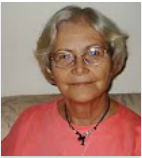



.jpg)
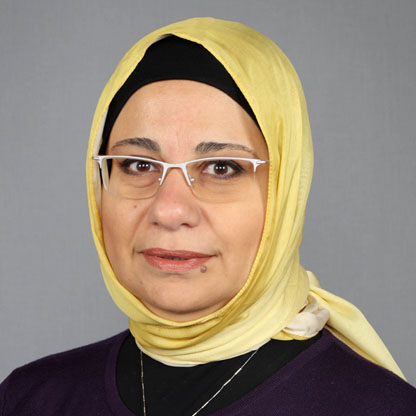








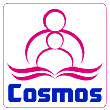




















 Editorial Board Registrations
Editorial Board Registrations Submit your Article
Submit your Article Refer a Friend
Refer a Friend Advertise With Us
Advertise With Us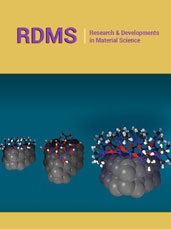
.jpg)
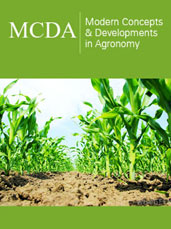
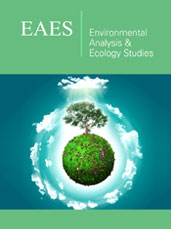


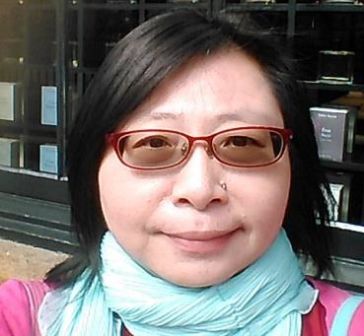
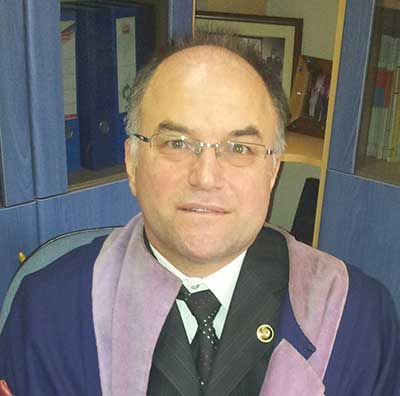
.jpg)














.bmp)
.jpg)
.png)
.jpg)







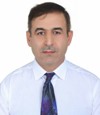

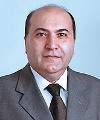
.jpg)






.png)

.png)



.png)






